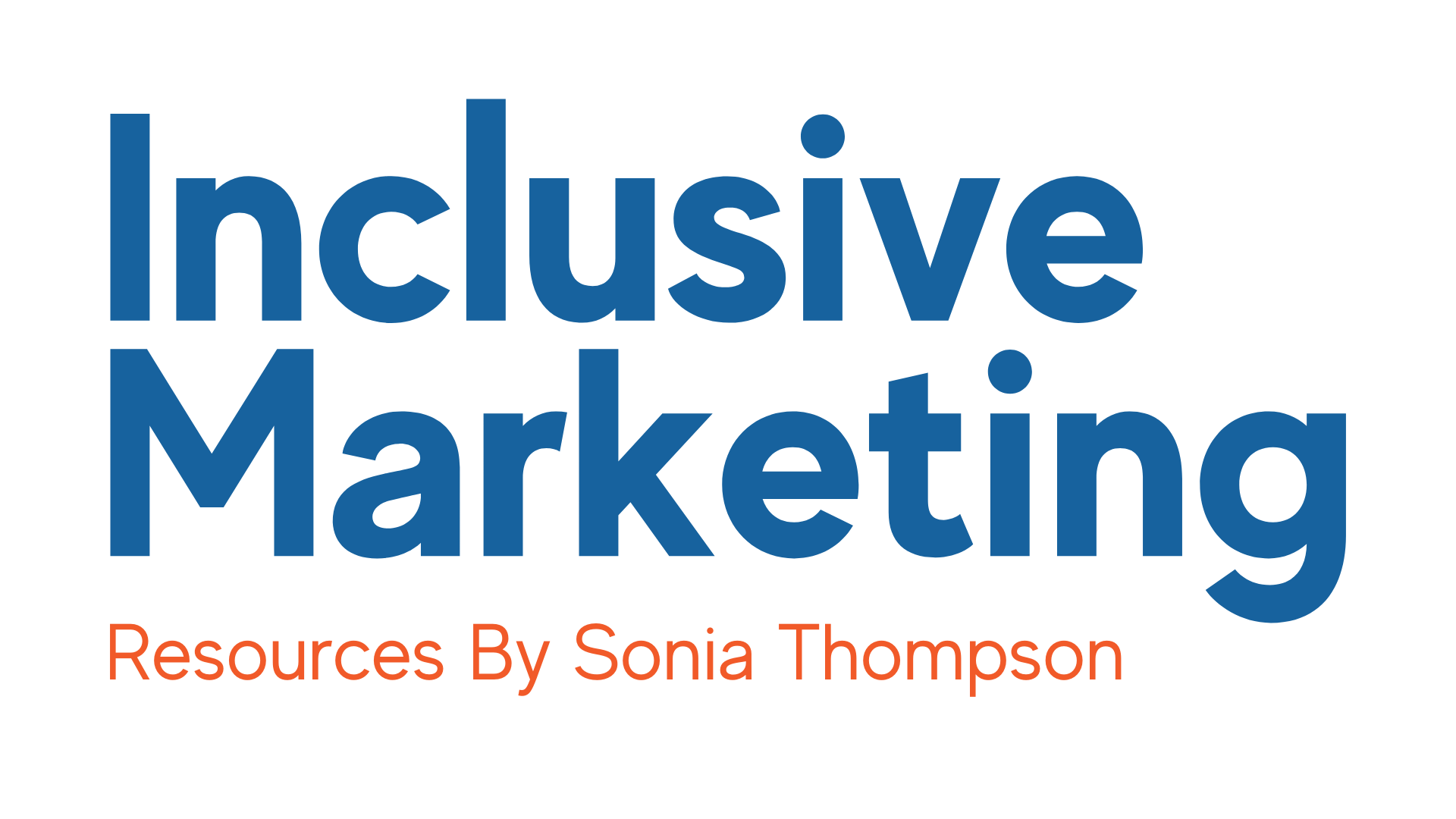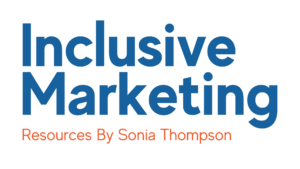Get the episode transcript here
There are plenty of articles that showcase inclusive marketing examples. The problem with many of those. is they don’t really help you understand the different ways in which a brand can engage in inclusive marketing and the impact those various approaches have on the end consumer.
It is important to recognize that not all forms of inclusive marketing are created equal.
To be clear, here in this community we praise progress over perfection.
I also want to give you the insights and knowledge you need to deliver better customer experiences. As a result, you’ll convert more of the people you want to serve. You’ll also ensure that more of them thrive when interacting with your brand, products and services.
Let’s do that by walking through some inclusive marketing examples through the lens of my 5 categories on the inclusive marketing spectrum.
The Inclusive Marketing Spectrum
This spectrum, highlights the different ways brands show up for the customers they serve from an inclusivity standpoint.
The first category on the spectrum is of course not where you want to be. The second category is a marked improvement, but not really where you want to stay. And the last three categories deliver better experiences overall – with the last two categories being ideal.
I do want to note, that this spectrum is fluid. As a brand, you may deliver certain experiences that are in one category, and others that are part of another. How you serve certain customer groups may appear in one category. And how you serve other customer groups could appear in another.
The goal here with these inclusive marketing examples categorized on the spectrum is to open up your awareness. That awareness will help you to make intentional choices about where to focus your efforts and make improvements.
Exclusion Marketing
The first category on the inclusive marketing spectrum is exclusion marketing.
There’s really not much to say about this one. Just know that the amount of brands engaging at this point on the spectrum is abundant. This is when companies don’t take into consideration the fact that consumers have differences. As a result, they don’t accommodate those differences in any way.
They cater to the mainstream and only the mainstream.
This choice doesn’t mean that there is ill intent on behalf of the marketers and business leaders. However, the impact on people with differences from underrepresented and underserved communities is real.
Brands that exclude will soon learn that it’s costing them customers and revenue. So hopefully, they’ll get hip to the fact that they should be intentional about including more people in their marketing.
It is important to note that this form of exclusion may be what you engage in for customer groups you’ve decided aren’t your area of focus.
When I describe exclusion marketing, I don’t mean that these customers aren’t welcome in your business. If they come to you – I’m sure you’ll gladly take their money.
In most instances, marketing that excludes means the marketing and the customer experiences you deliver don’t do anything to acknowledge the specific needs of a group of customers with a shared identity.
For instance, if you’re marketing does nothing to intentionally include people over the age of 50, they may still be welcome in your business. But it means that all your focus and attention is on customer groups that don’t have this identity.
Of course, excluding certain groups, or not being intentional about including them in some way is your choice to make. Just know, that in making this choice, you’re likely going to convert a whole lot less people who have this identity.
Raise Your Hand If You’re Different
I don’t want to rail too hard against this category, because in this instance, brands are trying. But the experience they are actually delivering is falling short. And it doesn’t make the actual consumer feel good in many instances.
We can all agree that making consumers feel some type of way isn’t a good thing. It causes unnecessary friction that could cause them to walk away from you and never look back.
Why is this approach something you want to avoid?
Because people have varying relationships with that thing that makes them different. And sometimes their relationship with what makes them different is fluid. They don’t always want to have to bring it up. Lots of time they don’t want to think about their differences in specific moment. And lots of people don’t want to have to proactively share their differences with strangers to get their needs met.
So as marketers and business leaders, lets avoid making this a part of the customer experience.
My favorite example that illustrates this comes from the great Shonda Rhimes in her book Year of Yes.
In it, she describes a time when couldn’t close the seat belt on her first class seat because of her weight. In that moment, she weighed her options. She could ask the flight attendant for a seat belt extender. Or she could take the risk of falling out of her seat and dying, as a result of not having extender-free seat belt bucket. In this clip (at the 3:19 mark) of her talking to Ellen Degeneres, she shares that she decided to risk it, because she wasn’t going to say anything to the flight attendant.
In the book, Shonda goes on to say how she ended up losing a hundred pounds. It’s a wonderful story. But her weight loss isn’t the point for these corresponding inclusive marketing examples.
The point is, “she would rather die” than say something to the flight attendant about what she needed.
It is very common for restaurants to deliver experiences in this category. As a gluten-free person, I don’t feel any shame about being gluten-free. But sometimes, I hate being the person that has to ask all the questions at the restaurant. I really dislike having to request a special menu.
One other example of this is when someone who speaks another language. Let’s say the customer is a Spanish speaker where Spanish-speakers are a significant percentage of the population. For that consumer, it can be frustrating for them to have to go and ask a worker if they speak Spanish.
Again, they are having to raise their hand to see if it is possible for them to get what they need.
A better option is to have the workers wear a nametag or some identifier that makes it clear the languages they speak. That way, the customer can easily identify someone who can help them. And they can just approach them “normally” — without having to ask the question first whether having to confirm if they speak their language.
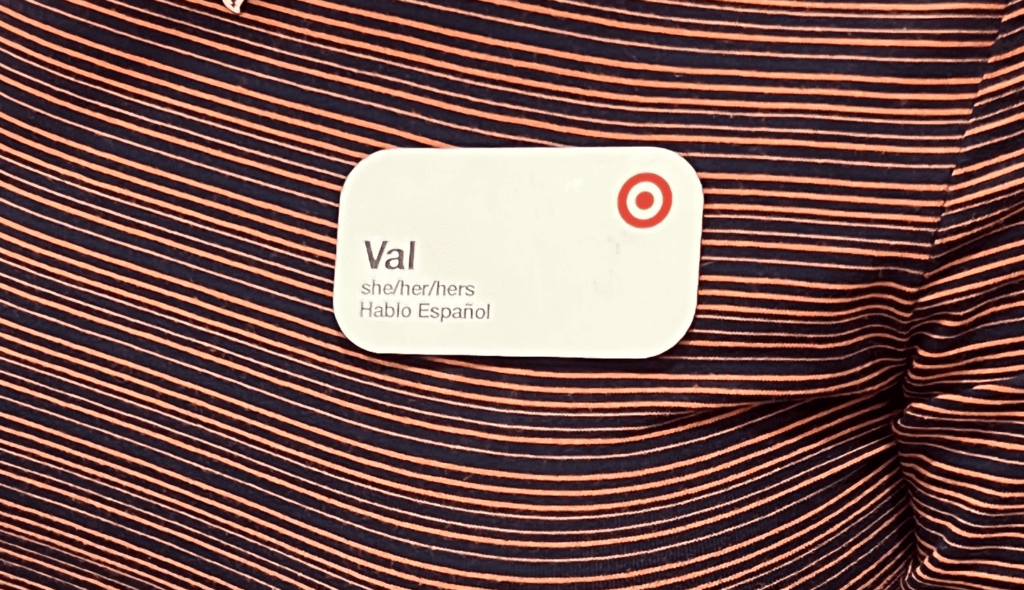
You’ve Got Options
This category is when you acknowledge that people have differences. And then you provide options to them to self-select what it is they need from you. This is so much better than having to call out to someone, a stranger, that they are different.
Here are some inclusive marketing examples that use this category on the spectrum.
At Sprinkles Bakery, they’ve got a full range of cupcakes. They also have 2 gluten free cupcakes, a vegan cupcake, and a sugar free cupcake.
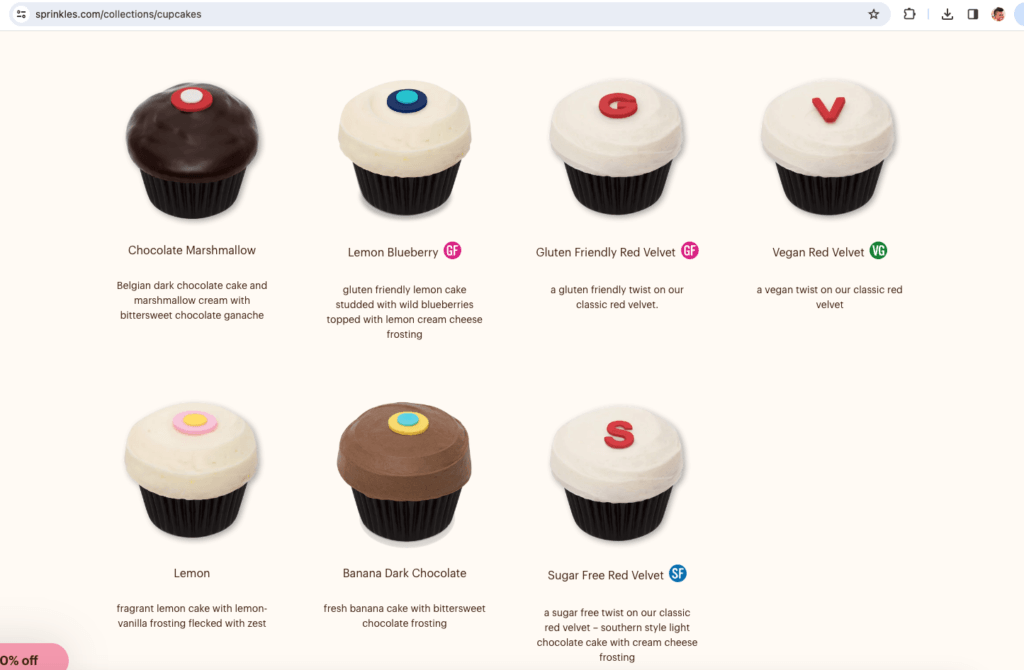
They cater to people with these dietary restrictions by providing them with some options. Those options are clearly labeled. The customer just has to tell the employee what they want — and off they go.
Walmart recently introduced sensory friendly hours from 8-10 every morning for their stores in the U.S. and Puerto Rico. They do this for their shoppers who have sensory processing disorder. The disorder is common among people with Autism, ADHD, PTSD an dyslexia.
One other inclusive marketing example of the “you’ve got options” category, is one I saw this at a theme park. The roller coaster had an aisle marked for people who have a wider frame and or broader shoulders.
So when you’re going to go select which aisle you’re going to get on to sit on your seat, you would just go to one of the ones that had it labeled on the overhead sign that it accommodated people with a broader frame that needed extra space.
The beauty of it was that anyone could go into that line. People who needed the extra space and people who didn’t were able to self-select their preferred option without having to call attention to the fact. Those signs made it a much more pleasant experience.
You’re “Normal”
Normal is kind of a weird word, because what really is normal anyway, but that’s a topic for another day.
Sometimes people just don’t want to feel different. They don’t want to have to think about their differences. They just want to have the same types of experiences, with the same number of steps, and achieve the same degree of success as everyone else.
So anytime a brand can work to acknowledge the ways in which people are different, without making them feel different, that’s a win.
Here are some inclusive marketing examples of how some brands have done that successfully.
Underwear and shapewear brand SKIMS makes shopping for undergarments that match your skintone a seamless experience. If you go to the website and wanted to buy a bra for instance, there’s a large range of shades that makes it easy for you to pick the one that matches your skin tone.

Fenty Beauty has 40 shades of foundation to cover people who have different complexions all over the world. Every shade is covered – no one shade is elevated above the other.
A few years ago, retailer Old Navy launched BodEquality, which they called a “fashion revolution.” With this new approach, they removed “plus-sized” sections from their stores. They also removed is as a category on their website, and put all the clothes together.
This way, people didn’t feel “othered” by having to go to a different section of the store to find items that worked for them. One other element of their new way of operating is that all sizes and all styles are the same price. So if a size 6 pair of jeans cost $25, that same style of jean in size 24 would also be $25.
It used to be that Old Navy, and this is common practice for lots of brands, prices are higher on items for people who don’t fit into what is considered to be “normal.” I know this first hand. A ton of restaurants will charge you extra for gluten-free bread on a hamburger for instance.
Perhaps one of my favorite examples of this whole “you’re normal” part of the inclusivity spectrum comes from technology companies.
Buy a new Samsung phone or iPhone, and it is configured to work in a ton of languages. Same with cars (because the screens on those cars have words on them). And this even works with cameras.
The “choose your language” functionality is already built in, so people who speak Spanish, French, Portuguese, Japanese, or Hindi – can easily go in and select which language they want to use the product in, and everything changes.
The key thing here that makes the approach work so well, is that it does not center any one identity as “normal” or “right” or even as if it is more profitable or preferred for or by the brand. It just acknowledges that people are different, and builds products, services, and experiences accordingly.
Exclusively For You
There are some groups of customers that have very specific needs that make it more difficult to fit into a “you’re normal” approach that is designed for a broader group of people.
That’s why some brands have chosen to serve these customer groups by providing products, services, and experiences that are just for them, that address these unique needs.
This strategy and approach works both for building entire companies around, as well as with developing specific products and services as a component of your broader offering.
Nike has used this strategy as one piece of their product offering on a few occasions.
One is with their Fly Ease shoe, designed to help you get into and out of your shoe without the need for hands. The shoe and the technology for it were designed specifically to be accessible for people to use, no matter their ability, and was designed in collaboration with insights from the disability community.
Another is with their Pro Hijab line of performance sportswear for Muslim women athletes who prefer to cover their heads for religious reasons.
Haute Hijab is a fashion company that focuses on Muslim women exclusively – with their principle product being hijabs, including ones made for sport. They also sell hijab magnets, and other accessories.
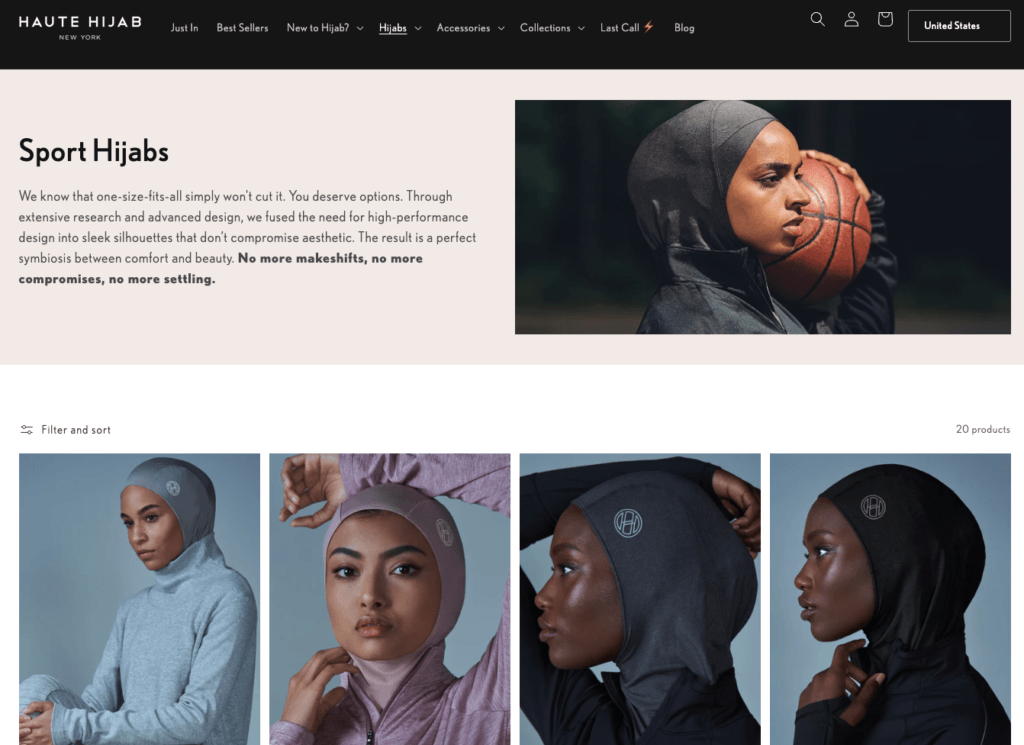
Nubian Skin is a brand dedicated to providing nude hosiery and lingerie for women of color. The founder, Ade Hassan created the company after struggling to find nude lingerie and hosiery that matched her skin tone.
Note: In the previous section, I mentioned that SKIMS takes the “you’re normal” approach, making it easy from consumers to select undergarments that fit their skin tone.
This Nubian Skin example falls into this “exclusively for you” category, because it caters specifically to women of color.
Some people — particularly those from underrepresented and underserved communities prefer to buy from people who’ve catered to them exclusively (and quite frankly where the people behind the brand share their identity) than the brands that cater to the masses.
And one other inclusive marketing example of this “exclusively for you” strategy is Canyon Bakehouse Gluten Free – a company that specializes in selling gluten-free breads that are also free of other common allergens, for people.
This category works for service type businesses as well.
Megan Williams is the founder of Black Freelance, an online community that helps freelancers of color thrive. She told me that early on in her own freelance career, she saw the same questions popping up over and over again, that were specific to people of color. As a result, mainstream outlets serving freelancers didn’t cover those topics. Black Freelance filled that void.
And Shapes and Curves Fitness are gyms that are for women only.
It’s Time To Choose Where You Want To Be On The Inclusive Marketing Spectrum
Now that you know the categories on my inclusive marketing spectrum, it’s time to figure which categories you want your products, services, and experiences to be.
From there, you can assess where the products, services, and experiences you currently deliver measure up on the spectrum. Doing it this way makes it easier for you to make plans about how to close the gap between where you are and where you want to go.
